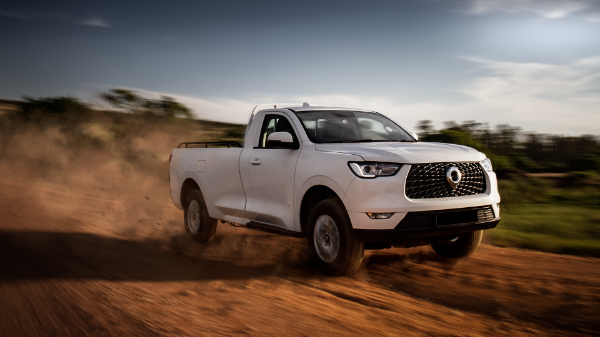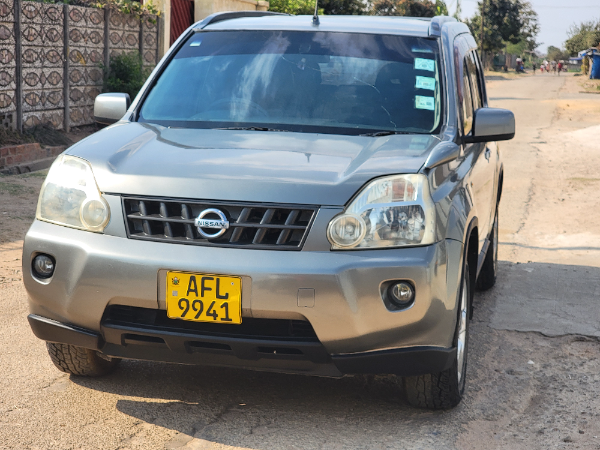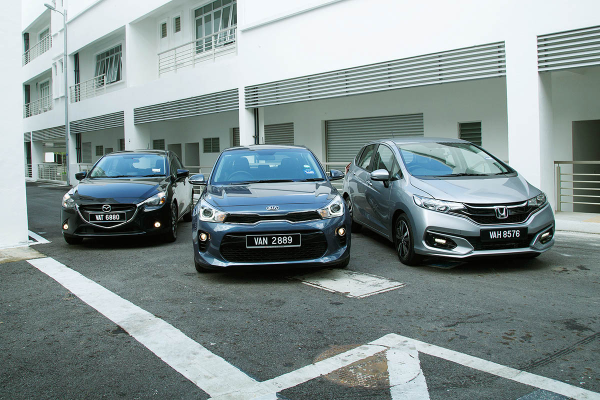Best Practices for Driving at Night and the Benefits of Matrix LED Headlights with Glare-Free High Beam
• Ford's Matrix LED has an ingenious high-beam boost function and a glare-free high beam.
• Nighttime crashes involve more teen and inexperienced drivers.
• Two major factors are exhaustion and slowed reflexes.
While it's common knowledge that driving at night is risky business, statistics show that inexperienced and younger motorists are disproportionately engaged in collisions on dark roads. Some studies suggest that this is due to sleepiness, which impacts both reaction speed and the ability to recover from glare after being blinded by bright lights.
According to data compiled by the Governors Highway Safety Association2 in the United States, between the hours of 9 p.m. and midnight, young and inexperienced drivers are three times more likely to be involved in a fatal incident than they are during the day.
When driving at night, keep in mind these eight lessons and guidelines.
Wipe down the inside of the windshield.
Most individuals only wipe the outside of a dirty windscreen because they believe it to be unimportant. Condensation and smudged fingerprints on the inside of the windshield can further obscure your view of the road. These smudges might reflect light from the outside and create glare for the passenger area. Maintain a microfiber cloth in the car and wipe down the inside of the windshield on a regular basis.
Fix your lighting properly.
Do not drive in fog without turning on your fog lights. These are made for times when visibility is low, such during a storm. Instead of projecting a beam down the road and lighting up the fog, they function by directing a beam of light that illuminates the area in front of your vehicle. On the contrary, using your high beams in fog can make it impossible to see further ahead. The switch to turn on the fog lights, if your car has them, will be located on the lighting control panel. Only turn on the fog lights when visibility is really low. Daytime running lamps are another safety feature used to increase your car's visibility to other drivers. The function of your fog lights will not be replaced by these.
Don't stare into the candle
Driving at night requires adjusting your vision to the low light levels inside the vehicle and the road. Headlights from oncoming automobiles and other sudden sources of light lessen the contrast in your night vision, making it harder to spot potential dangers.1. Protect your night vision by looking off to the side of the light source.
Watch out for the wildlife.
Nighttime is peak activity time for many animal species, although they are much harder to observe. Some may be drawn to your car's headlights, prompting you to swerve out of their way. Knowing what to watch for increases the likelihood that you will see an animal on or near the road, allowing you more time to safely brake and avoid an accident. Light reflected in their eyes will look like tiny pinpoints of light, a sure giveaway. Sometimes the first thing you notice about an animal is its eyes.
In addition, it's important to make it a practice to glance as far down the road as possible, given the current lighting and traffic. The ability to foresee potential dangers from a safe distance will serve you well in any situation.
Just how wide is it?
Standard headlights have a range of around 70 meters when set to low beam, and about 200 meters when set to high brightness. Matrix LED with glare-free high beam is standard on the Ranger Raptor and will be standard on the forthcoming Ranger Wildtrak X. This feature can activate a cluster of inactive LEDs to project a beam onto the road whenever it is safe and convenient to do so, providing additional illumination of the area and any possible hazards it may include.
High-beam matrix LEDs that don't cast shadows
In the case of the Raptor and the Wildtrak X, advanced Matrix LED headlights with glare-free high beam function in tandem with the vehicle's forward-facing camera to identify head- or taillights from a distance of up to 800 meters. When the technology recognizes another car, it automatically shuts off the LEDs that could blind oncoming traffic or the vehicle being followed.
Even though the other car's windshield is dark, the area surrounding it is well lit thanks to the high beams.
The following are requirements for the system to function:
• Your car must be traveling at speeds more than 64 kilometers per hour.
• If the system's "field of vision" contains no oncoming or departing lights.
• When the ambient light is low enough that high beams are necessary and the glare-free high beam has been activated through SYNC.
It's not true that every road is a straight shot.
Using sensors to determine speed and steering angle, the Matrix LED headlights from Ford can be bent dynamically (low beam only) by up to 15 degrees. That's plenty of 'bend' to show you the way around most sharp corners. The new Ranger has static cornering lights that switch on whenever the vehicle is turning, in addition to the dynamic bending lights.
Controlled Auto-High Beams
Automatic High Beam Control will use Ranger's forward-facing sensors to identify the head- or taillights of other vehicles and will automatically switch the high beam on or off if conditions allow, even if your vehicle is not equipped with Matrix LED with glare-free high beam.
These cutting-edge headlight technology, found on the newest Everest and Ranger, can greatly minimize the dangers of night driving, but they are at their most effective when used in tandem with safe driving habits.
• Nighttime crashes involve more teen and inexperienced drivers.
• Two major factors are exhaustion and slowed reflexes.
While it's common knowledge that driving at night is risky business, statistics show that inexperienced and younger motorists are disproportionately engaged in collisions on dark roads. Some studies suggest that this is due to sleepiness, which impacts both reaction speed and the ability to recover from glare after being blinded by bright lights.
According to data compiled by the Governors Highway Safety Association2 in the United States, between the hours of 9 p.m. and midnight, young and inexperienced drivers are three times more likely to be involved in a fatal incident than they are during the day.
When driving at night, keep in mind these eight lessons and guidelines.
Wipe down the inside of the windshield.
Most individuals only wipe the outside of a dirty windscreen because they believe it to be unimportant. Condensation and smudged fingerprints on the inside of the windshield can further obscure your view of the road. These smudges might reflect light from the outside and create glare for the passenger area. Maintain a microfiber cloth in the car and wipe down the inside of the windshield on a regular basis.
Fix your lighting properly.
Do not drive in fog without turning on your fog lights. These are made for times when visibility is low, such during a storm. Instead of projecting a beam down the road and lighting up the fog, they function by directing a beam of light that illuminates the area in front of your vehicle. On the contrary, using your high beams in fog can make it impossible to see further ahead. The switch to turn on the fog lights, if your car has them, will be located on the lighting control panel. Only turn on the fog lights when visibility is really low. Daytime running lamps are another safety feature used to increase your car's visibility to other drivers. The function of your fog lights will not be replaced by these.
Don't stare into the candle
Driving at night requires adjusting your vision to the low light levels inside the vehicle and the road. Headlights from oncoming automobiles and other sudden sources of light lessen the contrast in your night vision, making it harder to spot potential dangers.1. Protect your night vision by looking off to the side of the light source.
Watch out for the wildlife.
Nighttime is peak activity time for many animal species, although they are much harder to observe. Some may be drawn to your car's headlights, prompting you to swerve out of their way. Knowing what to watch for increases the likelihood that you will see an animal on or near the road, allowing you more time to safely brake and avoid an accident. Light reflected in their eyes will look like tiny pinpoints of light, a sure giveaway. Sometimes the first thing you notice about an animal is its eyes.
In addition, it's important to make it a practice to glance as far down the road as possible, given the current lighting and traffic. The ability to foresee potential dangers from a safe distance will serve you well in any situation.
Just how wide is it?
Standard headlights have a range of around 70 meters when set to low beam, and about 200 meters when set to high brightness. Matrix LED with glare-free high beam is standard on the Ranger Raptor and will be standard on the forthcoming Ranger Wildtrak X. This feature can activate a cluster of inactive LEDs to project a beam onto the road whenever it is safe and convenient to do so, providing additional illumination of the area and any possible hazards it may include.
High-beam matrix LEDs that don't cast shadows
In the case of the Raptor and the Wildtrak X, advanced Matrix LED headlights with glare-free high beam function in tandem with the vehicle's forward-facing camera to identify head- or taillights from a distance of up to 800 meters. When the technology recognizes another car, it automatically shuts off the LEDs that could blind oncoming traffic or the vehicle being followed.
Even though the other car's windshield is dark, the area surrounding it is well lit thanks to the high beams.
The following are requirements for the system to function:
• Your car must be traveling at speeds more than 64 kilometers per hour.
• If the system's "field of vision" contains no oncoming or departing lights.
• When the ambient light is low enough that high beams are necessary and the glare-free high beam has been activated through SYNC.
It's not true that every road is a straight shot.
Using sensors to determine speed and steering angle, the Matrix LED headlights from Ford can be bent dynamically (low beam only) by up to 15 degrees. That's plenty of 'bend' to show you the way around most sharp corners. The new Ranger has static cornering lights that switch on whenever the vehicle is turning, in addition to the dynamic bending lights.
Controlled Auto-High Beams
Automatic High Beam Control will use Ranger's forward-facing sensors to identify the head- or taillights of other vehicles and will automatically switch the high beam on or off if conditions allow, even if your vehicle is not equipped with Matrix LED with glare-free high beam.
These cutting-edge headlight technology, found on the newest Everest and Ranger, can greatly minimize the dangers of night driving, but they are at their most effective when used in tandem with safe driving habits.









